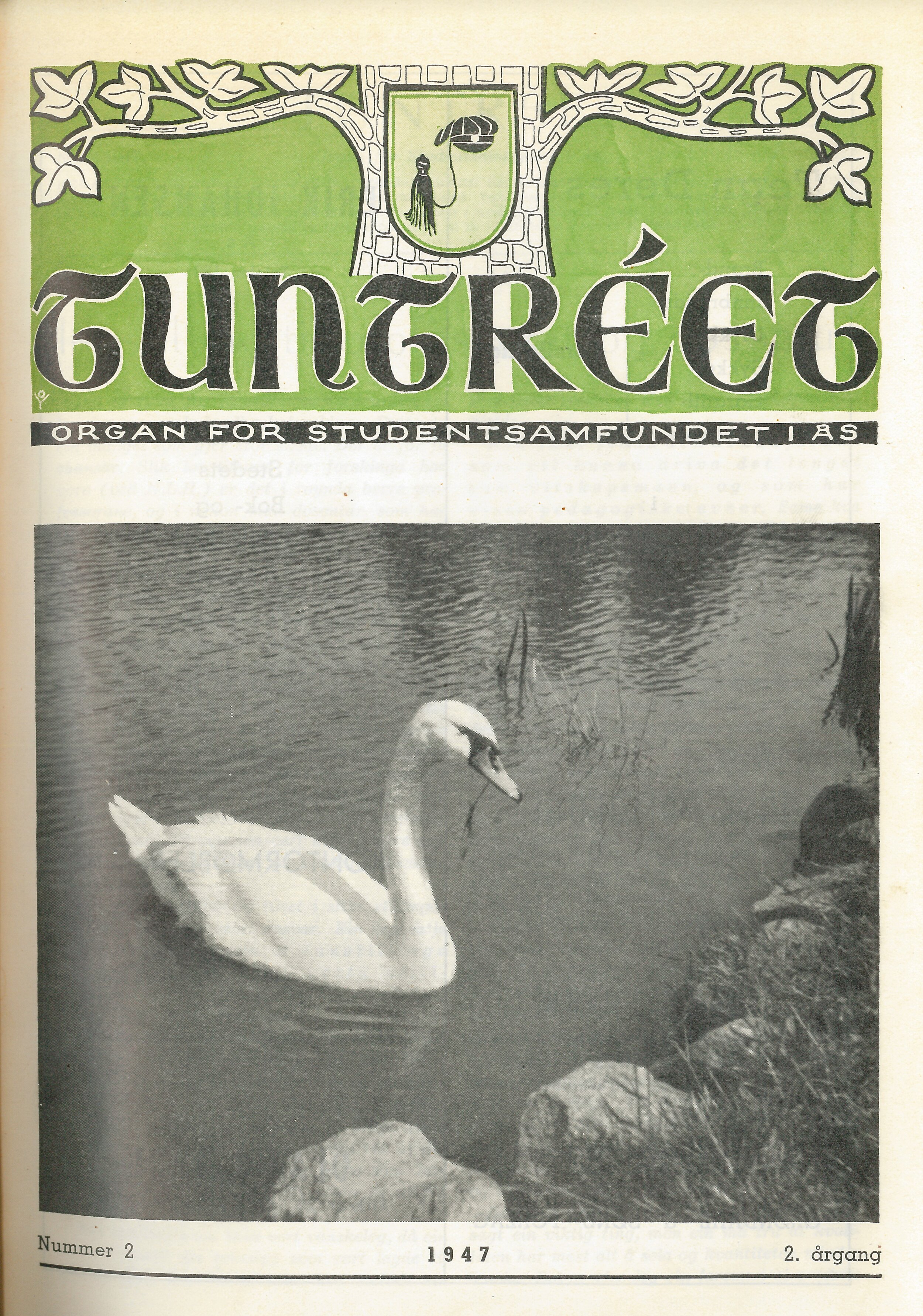Tuntreet decade by decade: The 40s

Tuntreet decade by decade: The 40s
For many years Samfunnet i Ås had a dream about having their own paper printer for their members. In 1946 this dream was realized as Tuntréet (misspelled as Tuntèet in the first issue). Ever since, it has been an important source of discussion, entertainment and history thought its 75 years. Wait, has it become this old?? There really seems like there is a jubilee to be celebrated every single year within the student scenery, and this year it is Tuntreets turn. ¾ centuries old have you turned, and that is why throughout this year I wish to dive deep into what the students were concerned about, decade by decade. With introductions out of the way, I would like to introduce you all to Tuntreet in the 40s!
Journalist: Tord Kristian F. Andersen
Translator: Thea Samskott
Tuntreets predecessors
Ok, I lied a little. Firstly, I want to mention something about the origin, as the paper did not appear from thin air! Tuntreet was a product of long-term trials of getting a paper for Studentsamfunnet. Already in the 1870s Cometen was published. In the 1880s Tutarhornet was printed. Moving on, in the 1890s they published Bonden. From 1900 Samfunnsavisen came around. This one was published for about 30 years, and these editions can still be found in the archives at Samfunnet. All this time it was unsure whether it was even possible to run a student paper, both with an editorial staff in mind but also economy as the body of students still was quite small. At least if you compare it to the body of students today! Another 15 years and a world war passed before the first edition of Tuntreet was printed. Today we think the student paper is given, but it is important to note that this is not the case for the first half of this last century.
Post war vibes
Less than a year after the atomic bomb was released over Japan (of which one can read about in issue 4 ´46) the first Tuntreet was published. What was the purpose? Then like now: “Tuntreet must and shall be a student paper!”. The name is never explained, but for outsiders, it refers to the big linden tree on the eponym smallholding on campus. In the first edition the student life was put into perspective with the remnants of the second world war. Commemoratory words for important student personalities, among them one of Samfunnets chairmen (today referred to as leader) who was shot by gestapo in 1944. Some discussion was tied to how to move on in this new world, along with new innovations such as the United Nations.
Differences and equalities: What did they write about?
Everything was not sad, and one can clearly tell that the student spirit persisted, then like now. Exclusive establishments such as Hankattforeningen, P.B. and Skogbrukerforeningen will ring a bell amongst many of you. It is equally exciting to read about social clubs that no longer exists. Would you for example like to join Snuslaget N.L.H. Snus?
The papers brought up all kinds of themes. Sports were clearly popular as it was written about sporting facilities, games, results and other issues NHLI (today NMBUI) cared about. As an organ of Samfunnet, it is natural that Tuntreet covers Sammfunns-meetings and banquet nights. UKA is a big theme when it restarts in fall ´46. Agriculture is a reoccurring feature (who would have thought??). The conflict between Norwegian nynorsk and bokmål resurfaced from time to time. The paper is not shying away from politics.
Upon reading the 75-year-old texts I notice two things in particular. The features from abroad are the first. Would you like to hear about some Czech expressions? Learn more about how they live in Russia and eastern-Europe? Maybe even remote Africa? Then you could read just that. The other one is just a tiny detail, really, ideally just a corner in the issues. Marriage and engagements. Yes, there were actually so many who got married or became engaged that this was a permanent feature.
The editorial staff in nineteen-forty-something...
One can be truly impressed by the size of the editorial staff when looking at the first issue: Three. In addition to these, there was a business committee of two. The editorial staff grew and stabilized at about six people. Already back then double editors were a common sight. Other than these, including those mentioned above who later made way for an advertising manager, the positions were not listed. It was way more important to list their fields of study: Forestry st., agric. cand, dairy st. and so on. Illustrators were occasionally credited.
Past like present
In many was reading about the past in the present makes me realize that the past was not black and white. There is a wash of awe that sweeps over you when you are allowed to read primary sources such as these, especially when you can relate to it this strongly. People were people, then like now, and with a few exceptions I would say the student spirit remains the same. I have also spoken to people who remember this period of Ås history, these have in many ways confirmed this sensation for me. The deep continuity is very interesting, so follow along when I go through Tuntreet in the 50s!




